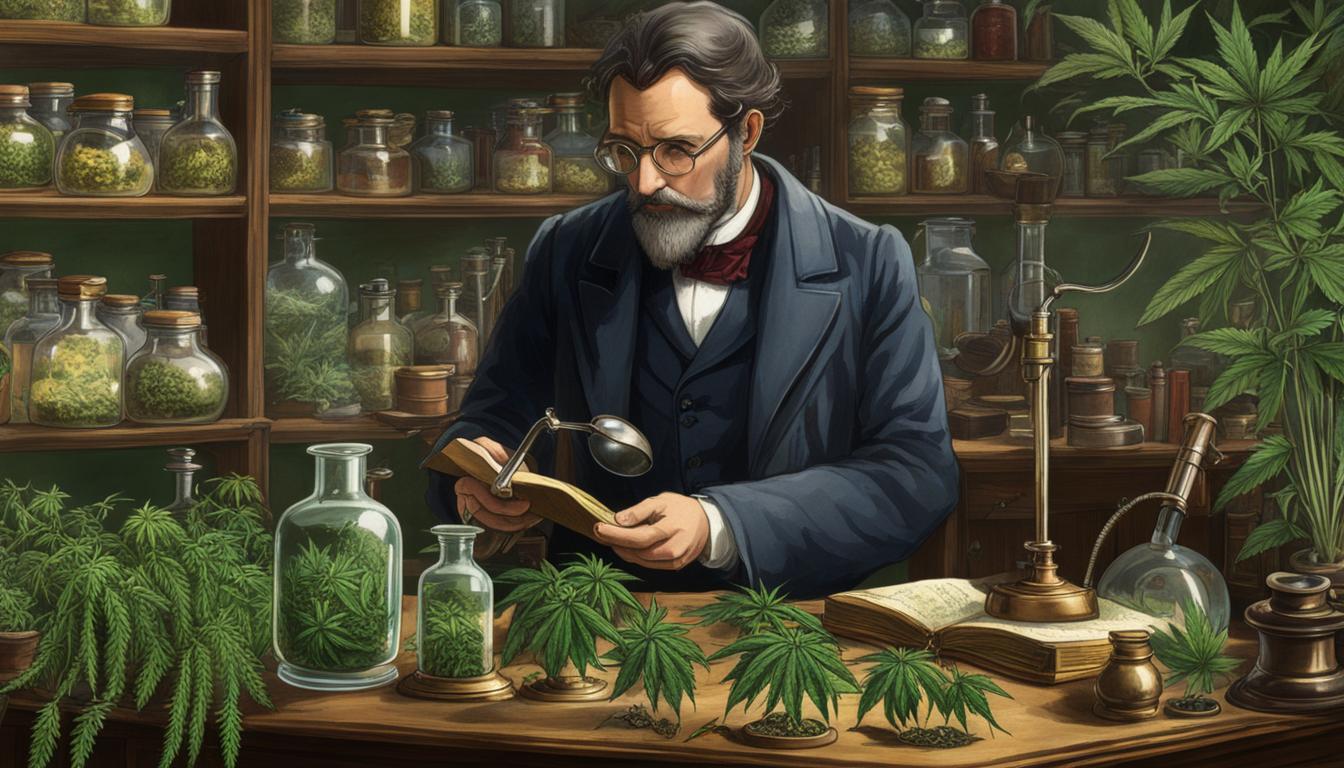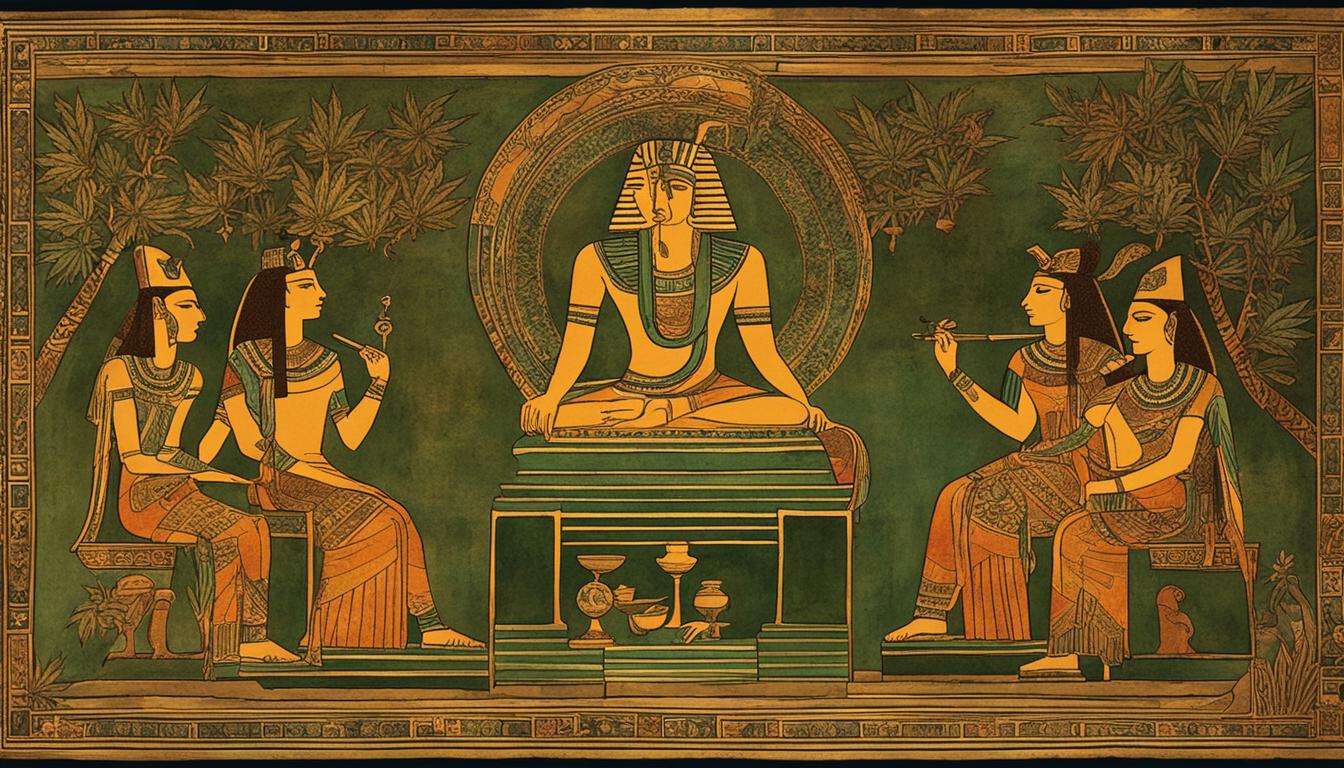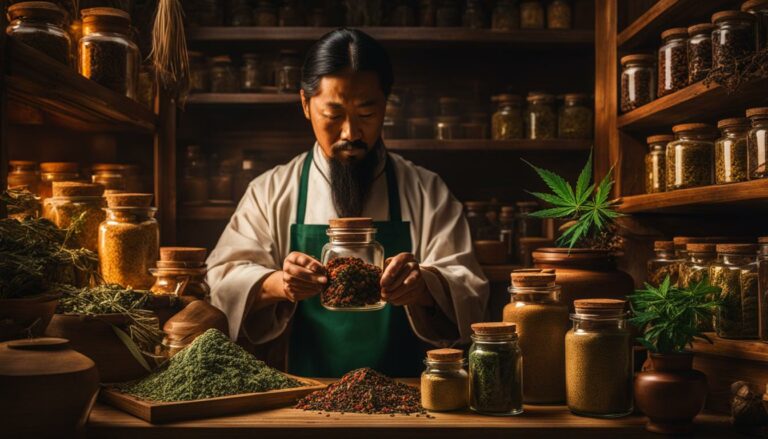How Did the Use of Cannabis Evolve During the Victorian Era?
Welcome to our exploration of cannabis use in Victorian times, where we delve into the historical cannabis use that shaped this era. Discover the fascinating journey of how cannabis evolved during the Victorian Era and its impact on society. From limited understanding to groundbreaking discoveries, we unravel the intriguing story of cannabis history during this remarkable period.
Cannabis Cultivation in Victorian Britain
During the Victorian Era, cannabis cultivation in Britain primarily focused on varieties that were cultivated for their fiber. These varieties were used in the production of sacking, ropes, and rigging. The climate and domesticated varieties in the UK limited the psychoactive properties of cannabis, meaning that its use for intoxicating purposes was not widely known or practiced.
Medical dictionaries and botanical encyclopedias of the time mentioned the existence of cannabis varieties with psychoactive substances, but this knowledge was likely recycled from earlier sources rather than based on direct experience. It is important to note that the understanding of the psychoactive properties of cannabis in Victorian Britain was limited, and its cultivation was mainly for industrial purposes.
| Table: Varieties of Cannabis Cultivated in Victorian Britain | ||
|---|---|---|
| Variety | Use | Psychoactive Properties |
| Fiber cannabis | Used for making sacking, ropes, and rigging | Low levels of psychoactive substances |
| Medicinal cannabis | Not widely cultivated | Varied, depending on specific strains |
| Intoxicating cannabis | Not widely cultivated | Limited availability |
Overall, the cultivation of cannabis in Victorian Britain was centered around its industrial applications rather than its psychoactive properties. The limited knowledge and understanding of cannabis as a recreational or medicinal substance during this era shaped societal perceptions and perceptions of cannabis use in subsequent years.
Discovering the Medicinal and Intoxicating Potential of Cannabis
During the Victorian Era, as British doctors and scientists traveled to different parts of the expanding empire, they began to encounter societies where cannabis was utilized for medicinal and intoxicating purposes. These encounters marked a turning point in the understanding and awareness of cannabis within Britain.
One notable figure in this discovery was Whitelaw Ainslie, a British physician and botanist, who published an account of cannabis preparations in 1813. His publication shed light on the intoxicating power of cannabis and its various applications, including pain relief and treatment for diarrhea. Ainslie’s work paved the way for further exploration of cannabis as a therapeutic substance.
The observations made by Ainslie were based on his experiences in India, where cannabis had long been used for both medicinal and recreational purposes. His documentation of the medicinal uses of cannabis, such as treating piles, diarrhea, and pain, provided valuable insight into the potential benefits of the plant.
“Cannabis has been found to possess nearly all the properties which can be ascribed to the narcotics, and is, therefore, applicable to many of the purposes for which they are employed.” – Whitelaw Ainslie
With Ainslie’s work as a foundation, the medical community in Victorian Britain began to explore the potential benefits of cannabis preparations. However, it is important to note that the focus at this time was primarily on the non-medicinal uses of cannabis and its intoxicating effects.
| Use | Medicinal Purposes | Intoxicating Effects |
|---|---|---|
| Relief of pain | Yes | No |
| Treatment of diarrhea | Yes | No |
| Recreational use | No | Yes |
The Medical Uses of Cannabis in Victorian Britain
In Victorian Britain, the medicinal uses of cannabis began to gain recognition among doctors and scientists. British physician Whitelaw Ainslie, in his work on the Materia Medica of Hindoostan, documented the various applications of cannabis in Indian medicine. He noted its use in treating conditions such as piles, diarrhea, and pain relief. Although Ainslie primarily focused on the non-medicinal uses and intoxicating effects of cannabis, his observations marked a turning point in British understanding of the therapeutic potential of the plant.
While Ainslie’s work provided valuable insights into the medical uses of cannabis, it is important to note that Victorian society held a negative view of intoxicating substances. The prevailing moral attitudes of the era associated cannabis and other psychoactive drugs with immorality and indulgence. As a result, the acceptance of cannabis for medicinal purposes was limited, and its recreational use faced increasing restrictions.
Despite societal reservations, the research conducted by individuals such as Whitelaw Ainslie paved the way for the introduction of medical cannabis in Victorian Britain. Their discoveries and studies laid the groundwork for future scientific investigations into the plant’s therapeutic properties. The Victorian Era’s understanding of cannabis as a medicinal substance, albeit limited, contributes to the ongoing debates and regulations surrounding cannabis use today.
Overall, the use of cannabis in Victorian Britain demonstrated a gradual recognition of its medical potential. However, societal attitudes and moral reservations hindered a more comprehensive understanding of the plant’s therapeutic properties. The legacy of the Victorian Era’s views on cannabis continues to shape the perceptions and regulations surrounding its use in modern times.
Victorian Society’s Perception of Cannabis
During the Victorian Era, cannabis use in British society was met with negative attitudes and moral disapproval. The prevailing values and social norms of the time discouraged the consumption of intoxicating substances, including cannabis. While the medicinal properties of cannabis were acknowledged by some, its recreational and intoxicating effects were seen as a vice and associated with immorality and indulgence.
Victorian society held a strong belief in personal responsibility and self-control. The use of substances that altered one’s mental state, such as cannabis, was deemed as a threat to moral character and social order. The era was characterized by a strict code of conduct and an emphasis on restraint, sobriety, and propriety.
Public opinion and the media perpetuated negative stereotypes and sensationalized stories, painting cannabis users as deviants and criminals. This further reinforced the societal stigma surrounding the plant and contributed to the marginalization of cannabis users. The fear of moral degradation and concerns over public health and safety fueled the push for restrictive drug policies in the years that followed.
“The excessive indulgence in opium and other deleterious drugs has introduced habits of immorality, indulgence, and criminality.” – British Medical Journal, 1877
This prevailing perception of cannabis during the Victorian Era has had a lasting impact on drug policies and regulations. The negative connotations associated with cannabis use influenced subsequent laws and restrictions, leading to the stigmatization of the plant and its users.
Table: Comparison of Attitudes towards Cannabis in the Victorian Era
| Aspect | Perception |
|---|---|
| Medicinal Use | Accepted with limitations |
| Recreational Use | Strongly discouraged |
| Societal Impact | Associated with immorality and criminality |
| Media Portrayal | Sensationalized and demonized |
| Drug Policies | Became more restrictive |
The Victorian Era’s perception of cannabis as a morally corrupting and dangerous substance continues to shape attitudes and policies towards cannabis use today. Understanding this historical context provides valuable insights into the ongoing debates surrounding cannabis and its legalization.
William O’Shaughnessy and the Introduction of Medical Cannabis

The Victorian Era witnessed a significant milestone in the understanding and use of cannabis with the groundbreaking research conducted by William O’Shaughnessy. As an assistant surgeon with the East India Company’s Bengal Medical Service, O’Shaughnessy played a crucial role in introducing medical cannabis to Victorian Britain.
During his time in India, O’Shaughnessy observed the therapeutic effects of cannabis among the local population and conducted experiments to further explore its potential. His research led him to recognize the medical value of cannabis and its applications for various ailments. O’Shaughnessy’s findings challenged the prevailing beliefs and contributed to the acceptance of cannabis as a legitimate medical treatment.
O’Shaughnessy published his research in 1843, documenting his experiments and observations on the use of cannabis to treat conditions such as pain, muscle spasms, and epilepsy. This publication, titled “On the Preparation of Indian Hemp, or Gunjah,” served as a significant turning point in the understanding and acceptance of medical cannabis in Victorian society.
O’Shaughnessy’s work on medical cannabis paved the way for further research and experimentation, ultimately shaping the development of cannabis as a medicinal substance in the Victorian Era.
The introduction of medical cannabis by O’Shaughnessy had a lasting impact on the perception and use of cannabis in Victorian Britain. While societal attitudes towards intoxicating substances remained largely negative, the medical community began to recognize the potential benefits of cannabis and its therapeutic applications. This shift in perspective laid the foundation for future advancements in cannabis medicine and contributed to the ongoing evolution of cannabis consumption.
| Key Milestones: | Impact on Cannabis Use |
|---|---|
| O’Shaughnessy’s research and experimentation | Established the medical value of cannabis |
| Publication of “On the Preparation of Indian Hemp, or Gunjah” | Increased awareness and acceptance of medical cannabis |
| Shift in societal perception | Recognized the potential benefits of cannabis for therapeutic purposes |
The pioneering work of William O’Shaughnessy marked a significant turning point in the understanding and acceptance of medical cannabis during the Victorian Era. His research laid the groundwork for further exploration and opened the doors to new possibilities in the realm of cannabis medicine.
The Victorian Era’s Legacy on Cannabis Use
During the Victorian Era, the prevailing moral and social attitudes towards intoxicating substances, including cannabis, shaped the perception and use of drugs in society. The negative view of drugs as vices influenced the evolution of cannabis consumption and subsequent drug policies.
Victorian society held strict values and perceived indulgence in intoxicating substances as immoral. Cannabis, with its intoxicating properties, faced significant scrutiny and stigma. While the medicinal uses of cannabis were acknowledged, its recreational use was associated with immorality and viewed as a threat to societal norms.
This negative perception of cannabis during the Victorian Era had a lasting impact on drug policies. The era’s moral attitudes towards intoxicating substances influenced subsequent regulations and restrictions on cannabis use. The legacy of the Victorian Era’s views on cannabis continues to shape the modern debates surrounding its legalization and medical applications.
To understand the historical evolution of cannabis use, it is crucial to examine the societal attitudes and policies of the Victorian Era. By doing so, we can gain valuable insights into the roots of current debates and regulations surrounding cannabis and its status as a controlled substance.
The Legacy of Victorian Attitudes on Cannabis Use
The Victorian Era’s negative perceptions and moral attitudes towards cannabis contributed to the stigmatization of the plant. The association of cannabis with immorality and sin led to the implementation of strict regulations and restrictions on its use.
“The prevailing moral and social attitudes of the time discouraged the use of cannabis and other psychoactive substances.”
While the Victorian Era marked the beginning of British awareness of cannabis as a therapeutic substance, its potential benefits were overshadowed by societal fears and conservative values. This legacy continues to shape the global conversation around cannabis, with ongoing debates on its legalization and medical applications.
Conclusion
Throughout the Victorian Era, the use of cannabis in Britain was characterized by limited awareness and understanding. While some British doctors and scientists recognized the medicinal and intoxicating potential of cannabis, societal attitudes viewed it, along with other intoxicating substances, as vices. This perception influenced drug policies and regulations in subsequent years, shaping the evolving landscape of cannabis consumption.
By examining the historical evolution of cannabis use during this era, we gain valuable insights into the current debates surrounding cannabis. The cultivation of cannabis in Victorian Britain was primarily for its fiber, with limited psychoactive properties due to the climate and domesticated varieties. Traveling doctors and scientists encountered societies where cannabis was used medicinally and recreationally, sparking curiosity and inquiry.
The pioneering research of individuals like Whitelaw Ainslie and William O’Shaughnessy played a crucial role in introducing medical cannabis to Victorian Britain. Their observations and experiments shed light on the therapeutic potential of cannabis preparations. However, societal perceptions, influenced by prevailing moral attitudes, hindered widespread acceptance of cannabis as a legitimate medical treatment.
The Victorian Era’s legacy has left an indelible mark on the perception of cannabis, leading to stigmatization and increasing restrictions on its use. Understanding this historical context is essential as we continue to navigate the complex landscape of cannabis consumption. By acknowledging the past, we can pave the way for informed discussions and meaningful progress in shaping future cannabis policies and regulations.
FAQ
How was cannabis used during the Victorian Era?
Cannabis was primarily cultivated for its fiber and had low levels of psychoactive substances. It was mainly used for making items such as sacking, ropes, and rigging.
When did British doctors and scientists start learning about the medicinal properties of cannabis?
British doctors and scientists began to learn about the medicinal and intoxicating properties of cannabis during their travels in the expanding empire.
Who was Whitelaw Ainslie and what did he contribute to the understanding of cannabis?
Whitelaw Ainslie published an account of cannabis preparations in 1813, highlighting its intoxicating power and various applications, including pain relief and treatment for diarrhea.
How did Victorian society view cannabis?
Victorian society held a negative view of drugs and substances that could cause intoxication. Cannabis, including its recreational use, was seen as a vice associated with immorality and indulgence.
Who conducted pioneering research on cannabis in the Victorian Era?
William O’Shaughnessy, an assistant surgeon with the East India Company’s Bengal Medical Service, conducted pioneering research on cannabis and recognized its potential as a medical treatment.
How did the Victorian Era’s perception of cannabis influence drug policies?
The negative perceptions and moral attitudes towards intoxicating substances, including cannabis, in the Victorian Era influenced drug policies, leading to increasing restrictions on its use for both medicinal and recreational purposes.
What insights can we gain from understanding the historical evolution of cannabis use during the Victorian Era?
Understanding the historical evolution of cannabis use during the Victorian Era provides valuable insights into the current debates and regulations surrounding cannabis use in modern times.
Source Links
- https://www.gresham.ac.uk/watch-now/cannabis-britannica-rise-and-demise-victorian-wonder-drug
- https://www.newscientist.com/article/mg23831760-400-high-times-the-victorian-doctor-who-promoted-medical-marijuana/
- https://brewminate.com/cannabis-britannica-the-rise-and-demise-of-a-victorian-england-wonder-drug/


